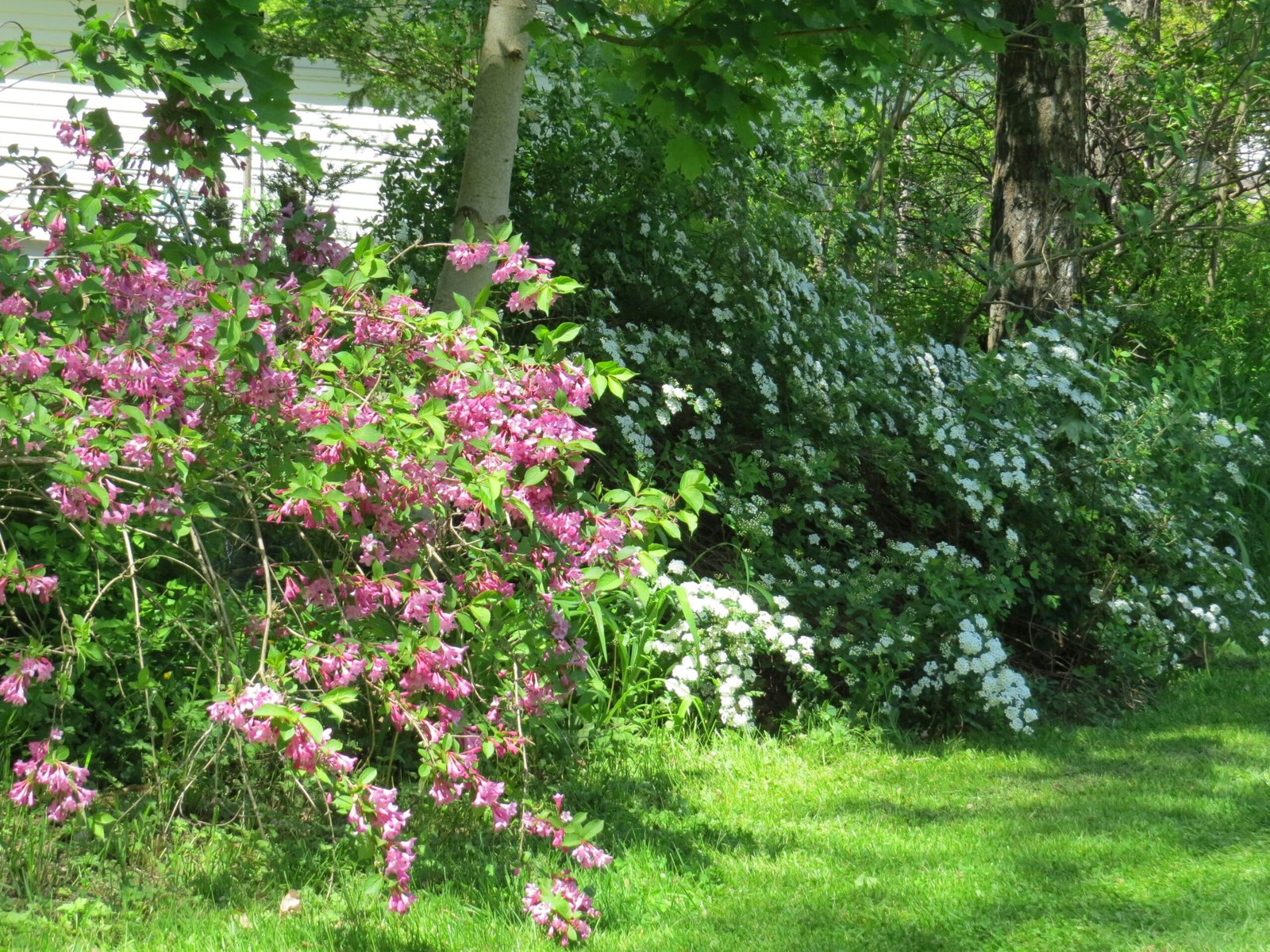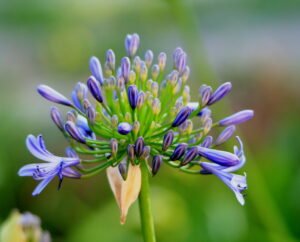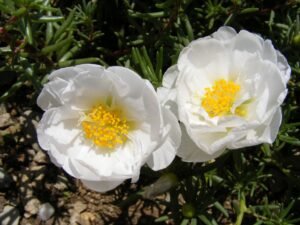Weigela Bush : How To Plant And Care

Photo by Shoresidelady1 on Unsplash
The Weigela bush, scientifically known as Weigela florida, is a deciduous shrub that belongs to the Caprifoliaceae family. Native to East Asia, particularly China, Korea, and Japan, this bush is widely cultivated for its stunning flowers and attractive foliage. If you’re looking to add a splash of color and charm to your garden, then the Weigela bush might be just what you need. In this article, we will explore the various aspects of this popular shrub, including how to plant and care for it.

The Weigela bush was first discovered in China in the 19th century by Scottish botanist Robert Fortune. He collected specimens of this beautiful shrub and introduced it to the Western world. Since then, the Weigela bush has become a beloved plant in gardens around the world.
Facts About Weigela Bush
The Weigela bush is a deciduous shrub that typically grows to a height of 6 to 10 feet. It has a rounded, spreading habit and produces clusters of tubular flowers in various shades of pink, red, and white. The flowers bloom in late spring and early summer, attracting bees, butterflies, and hummingbirds. By planting Weigela, you can attract these beneficial pollinators to your garden and support their populations.
One of the most attractive features of the Weigela bush is its foliage. The leaves are oval-shaped and come in shades of green, with some varieties having variegated or purple-tinged leaves. In the fall, the foliage may turn shades of yellow or purple before dropping for the winter. Due to their stunning flowers and foliage, Weigela bushes can be used as focal points in the garden. Plant them in strategic locations where they can be admired and appreciated.
Another characteristic of the Weigela bush is its ability to adapt to a wide range of growing conditions. It is hardy in USDA zones 4 to 8 and can tolerate both full sun and partial shade. The shrub prefers well-drained soil but can also tolerate a variety of soil types.
With their dense growth habit, some varieties of Weigela can be trained into attractive hedges. They can be pruned to maintain a desired height and shape, creating a beautiful living fence.
FAQ About Weigela Bush
When does weigela bloom?
Weigela typically blooms in late spring to early summer, usually around May or June, depending on your location and the specific variety of weigela. The blooming period can last for several weeks, providing a spectacular display of color in your garden. During the blooming season, weigela produces clusters of trumpet-shaped flowers in various shades of pink, red, and white.
How long do weigela live?
Weigela shrubs have an average lifespan of 10 to 20 years, but with proper care and maintenance, they can live even longer. By providing the ideal growing conditions, regular watering, pruning, and pest control, you can extend the lifespan of your Weigela shrubs and enjoy their beauty for many years to come.
When to plant weigela?
Spring is generally the best time to plant weigela. This is because the weather is starting to warm up, and the soil is beginning to thaw after the winter frost. Planting weigela in the spring gives the shrubs a chance to establish their root systems before the hot summer months.
It’s recommended to plant weigela in the early spring, after the last frost has passed. This will vary depending on your location, so it’s important to check the average frost dates for your region. Planting too early can expose the shrubs to late frosts, which can damage the tender new growth.
Where does a weigela grow best?
Weigela plants thrive in full sun to partial shade. Ideally, they should receive at least 6 hours of direct sunlight each day for the best blooming and overall health. However, they can tolerate some shade, especially in hotter regions. If you live in an area with intense afternoon sun, providing some afternoon shade can help prevent leaf scorching and keep the plant healthy.
Is weigela fragrant?
While some Weigela varieties do have a pleasant fragrance, others are not known for their scent. It’s important to note that fragrance is not a characteristic of all Weigela plants, so it’s essential to choose the right variety if fragrance is a priority for you.
If you’re specifically looking for a fragrant Weigela, consider varieties such as ‘Bristol Ruby’ or ‘Wine and Roses.’ These cultivars are known for their beautiful flowers and delightful scent, making them an excellent choice for those who want to add fragrance to their garden.
Is Weigela Bush Toxic?
Fortunately, weigela bushes are not considered toxic to humans, dogs, cats, or other common household pets. This means that if you accidentally touch or ingest any part of the weigela bush, you should not experience any adverse effects.
However, it’s always a good idea to wash your hands after handling any plant, especially if you have sensitive skin or allergies. This will assist in avoiding any possible allergic reactions or inflammation.
Popular Varieties of Weigela Bush
There are several varieties of weigela bushes available, each with its own unique characteristics. Here are some of the most popular ones:
1. Wine and Roses Weigela
The Wine and Roses Weigela is known for its stunning dark burgundy foliage and deep pink flowers. This type gives a sense of refinement to any landscape or garden. It blooms profusely in late spring and attracts butterflies and hummingbirds.
2. My Monet Weigela
The My Monet Weigela is a dwarf variety that is prized for its variegated foliage. The leaves are a combination of green, cream, and pink, creating a beautiful color palette. It produces delicate pink flowers in spring and has a compact growth habit, making it perfect for small gardens or containers.
3. Midnight Wine Weigela
The Midnight Wine Weigela is a compact variety that features dark purple foliage and bright pink flowers. It has a dense, mounding habit and is ideal for borders, edging, or mass plantings. This variety blooms from late spring to early summer and requires minimal pruning.
4. Sonic Bloom Weigela
The Sonic Bloom Weigela is a series of reblooming weigela bushes that produce flowers in both spring and summer. These varieties come in different colors, including red, pink, and white. They have a compact growth habit and attract pollinators, making them a great addition to any garden.
How To Plant Weigela Bush
Right Location
Before you start planting your weigela bush, it’s important to choose the right location in your garden. Weigela bushes thrive in full sun to partial shade, so look for an area that receives at least 6 hours of direct sunlight each day. Additionally, make sure the soil is well-drained to prevent waterlogging, as weigela bushes don’t tolerate soggy conditions.
Take into consideration the mature size of the weigela bush when selecting the planting spot. These bushes can grow up to 6 feet tall and wide, so choose a location that allows enough space for the plant to spread out without overcrowding other plants.
Preparing the Soil
Once you’ve chosen the perfect spot for your weigela bush, it’s time to prepare the soil. Begin by clearing the planting area of any grass or weeds. Using a tiller or garden fork, loosen the soil to a minimum depth of 12 inches. This will help improve drainage and create a loose, fertile bed for your weigela bush.
To increase the texture and fertility of your thick, clay-like soil, you might want to add some organic matter, such compost or well-rotted manure. Mix the organic matter into the soil thoroughly, ensuring it is evenly distributed.
Planting Your Weigela Bush
Now that your soil is prepared, it’s time to plant your weigela bush. Follow these steps:
- Dig a hole that is slightly wider and deeper than the root ball of your weigela bush.
- Gently remove the weigela bush from its container and loosen the roots if they are tightly bound.
- Place the weigela bush in the hole, making sure it is positioned at the same depth as it was in the container.
- Backfill the hole with soil, firming it gently around the roots to eliminate any air pockets.
- Water the newly planted weigela bush thoroughly to settle the soil.
How To Care For Weigela Bush
Sunlight
Choose a location that receives full sun to partial shade. Weigela bushes prefer at least six hours of direct sunlight each day.
Soil
Weigela bushes thrive in well-draining soil with a pH level between 6.0 and 8.0. To increase drainage, think about adding organic matter if your soil is heavy or clay-like.
Watering
Proper watering is crucial for the health and vitality of your weigela bush. Follow these guidelines:
- Establishment: After planting, water your weigela bush deeply to help establish its root system. Provide enough water to moisten the soil around the plant.
- Maintenance: Once established, water your weigela bush regularly, especially during dry periods. The soil should always be somewhat damp but not soggy. Avoid overwatering your plants as this might lead to root rot.
- Rainfall: Take into account the amount of rainfall in your area. If it has been raining consistently, you may not need to water your weigela bush as frequently.
Fertilizing
Feeding your weigela bush with the right nutrients will promote healthy growth and abundant blooms. Here’s what you need to know:
- Timing: Fertilize your weigela bush in early spring, just before new growth begins. Avoid fertilizing in late summer or fall, as it can stimulate new growth that may not have time to harden off before winter.
- Fertilizer: Use a balanced slow-release fertilizer formulated for flowering shrubs. Follow the package instructions for application rates.
- Application: Spread the fertilizer evenly around the base of the weigela bush, avoiding direct contact with the stems. Water the plant thoroughly after applying the fertilizer.
Mulching
Mulching around your weigela bush offers several benefits, including moisture retention, weed suppression, and temperature regulation. Follow these mulching guidelines:
- Material: Use organic mulch, such as wood chips or shredded bark, to create a layer about 2 to 3 inches thick. Avoid piling the mulch against the base of the plant.
- Application: Apply the mulch in a circle around the weigela bush, extending it to the drip line. Maintain a tiny space between the mulch and the stems to avoid problems caused by moisture.
- Renewal: Replenish the mulch annually to maintain its effectiveness. Remove any old or compacted mulch before adding a fresh layer.
Pruning
Pruning is an essential part of caring for your weigela bush. Follow these pruning tips:
- Timing: Prune your weigela bush immediately after it finishes flowering, typically in late spring or early summer. As a result, the plant is able to produce buds for the next year.
- Deadheading: Remove spent flowers to encourage more blooms and maintain a tidy appearance. Cut the flower stems back to a healthy set of leaves or buds.
- Thinning: To improve air circulation and reduce the risk of disease, thin out crowded branches by selectively removing older or weaker stems.
- Renewal: Every few years, consider rejuvenating your weigela bush by cutting back one-third of the oldest stems to the ground. This promotes fresh development and aids in keeping the form compact.
Pest and Disease Control
Weigela bushes are generally resistant to pests and diseases. However, it’s important to keep an eye out for any signs of trouble. Here are some common issues and their solutions:
- Aphids: If you notice clusters of small, soft-bodied insects on your weigela bush, you may have an aphid infestation. Use a strong stream of water to dislodge them or apply insecticidal soap according to the instructions.
- Leaf Spot: Leaf spot is a fungal disease that causes dark spots on the leaves. To prevent its spread, remove and destroy infected leaves. Avoid overhead watering and ensure proper air circulation.
- Powdery Mildew: The leaves with powdery mildew have a white, powdery coating on them. Prune affected branches and improve air circulation to prevent its occurrence. If necessary, apply a fungicide according to the instructions.
Winter Care
Preparing your weigela bush for winter will help protect it from cold temperatures and harsh conditions. Follow these steps:
- Pruning: After your weigela bush goes dormant in late fall, prune any dead or damaged branches. Avoid heavy pruning, as it can stimulate new growth that may be susceptible to winter damage.
- Insulation: Apply a layer of mulch around the base of the weigela bush to insulate the roots and protect them from freezing temperatures.
- Protection: If you live in an area with severe winters, consider covering your weigela bush with burlap or a frost blanket to shield it from extreme cold and wind.
Growing and caring for a weigela bush is a rewarding experience that can bring beauty and color to your garden. By selecting the right location, planting correctly, providing proper watering and fertilization, and performing regular maintenance, you can enjoy the stunning blooms of this versatile shrub for years to come. Remember to keep an eye out for any pests or diseases and take appropriate action if necessary. Happy gardening!





